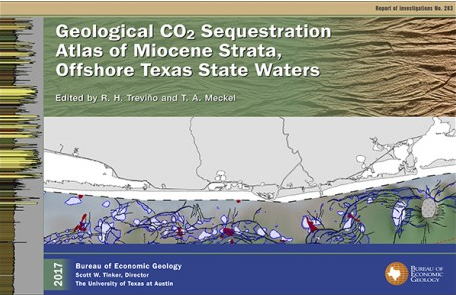Previous versions of EASiTool
The EASiTool App has evolved from version 4 and 5.0. To access the most recent version of EASiTool 5.1, click here.
EASiTool 5.0

Key 5.0 Updates
EASiTool 5.0, had several noteworthy improvements including:
- A clean, modern, web-based platform featuring an enhanced UI/UX design
- Parameter input using .xlsx files
- Flexibility to opt for either SI units, or field units, based on preference
- Integration of GIS maps for comprehensive output visualization
- Introduction of area of review (AOR) estimation with probability assessments
- Incorporation of Monte Carlo simulations to enable in-depth sensitivity analyses
- Enhanced net present value (NPV) models with updated parameters
- Substantial improvements to software runtimes
About the 5.0 Version
EASiTool 5.0 brought a significant advantage with a modern, updated web-based platform, eliminating the need for software installation. This new version also offered input and output functionalities through file (.xlsx) uploads and downloads. The users also had the flexibility to choose between SI units or field units, ensuring consistency throughout the tool. Using advanced analytical models for closed- and open-boundary basins, this tool enabled users to obtain reservoir-scale storage-capacity estimates. The runtime was typically within seconds, making this version significantly improved and faster compared to previous versions. This accelerated, science-based estimation process facilitated a faster decision-making process and enhanced efficient project planning.
EASiTool 5.0 comprised two different modules, tailored to different scenarios, and reservoir geometries:
User Given Inputs (Constant Injection/Extraction Rate): This module was designed for users who have preliminary plans for their CCS projects with specific well and reservoir geometries in mind. Users were required to provide well locations in UTM coordinates and define reservoir boundaries. This module offered special features such as pressure contour maps, CO2 plume extension maps, and a Geographic Information System (GIS) map—a new addition to this version. Users were also able to assess the storage capacity and evaluate the AOR, using both pressure contour and GIS maps by specifying increasing values for critical pressure. With the aid of AOR and GIS maps, this allowed users to make comprehensive evaluations for each project. This module provided flexibility by allowing users to tailor each analysis to their specific project and conditions.
Maximum Storage Capacity (Fixed, Bottom Hole Pressure): This module catered to general injection estimation, based on reservoir properties. With this module, users were able to explore well flow rates and net present value (NPV; with an update module), under a maximum CO2 storage-capacity scenario. The software was also able to output a well design scenario under the maximum NPV.
Users were also able to conduct a sensitivity analysis (SA) for both modules. Similar to previous versions, the SA offers useful tornado chart features. Exciting additions included a Monte Carlo simulation, allowing users to assess the impact of input parameters on capacity estimation (P5, P95 and mean values), and AOR evaluations with probabilities, which could be visualized on GIS/contour maps.
These powerful functionalities, offered by EASiTool, yielded a more holistic approach that helps teams make well-informed choices. Informed decisions, based on robust scientific results, enable more effective and successful implementations of carbon-storage initiatives.
EASiTool 4

Project Overview
- Enhanced Analytical Simulation Tool (EASiTool) for CO2 Storage Capacity Estimation and Uncertainty Quantification
- Project PI: Seyyed A. Hosseini
- Main Personnel: Reza Ganjdanesh, Seunghee Kim, Houman Bedayat
- Collaborators: C12 Energy
Download the EASiTool - User Manual - V4.0 here.
EASiTool 4 features:
- A brine extraction model has been coupled with the base model to evaluate the active reservoir management. User has the option to enter the number of extractors.
- Uniform injection/extraction rate has been added as an alternative for the optimal injection/extraction rate.
- User-defined locations for injection and extraction wells.
The EASiTool project culminated in the publication of two important scientific journal articles. Learn more about the methods and ability of EASiTool to more easily estimate carbon storage capacity:
- Ganjdanesh, Reza, and Seyyed A. Hosseini. 2017. “Geologic Carbon Storage Capacity Estimation Using Enhanced Analytical Simulation Tool (EASiTool).” Energy Procedia 114 (July): 4690–96. https://doi.org/10.1016/j.egypro.2017.03.1601.
- Ganjdanesh, Reza, and Seyyed A. Hosseini. 2018. “Development of an Analytical Simulation Tool for Storage Capacity Estimation of Saline Aquifers.” International Journal of Greenhouse Gas Control 74 (July): 142–54. https://doi.org/10.1016/j.ijggc.2018.04.017.
An analytical-based Enhanced Analytical Simulation Tool (EASiTool) was developed for technical and non-technical users with minimum engineering knowledge. The purpose of EASiTool was to produce a fast, reliable estimate of storage capacity for any geological formation. EASiTool included closed-form analytical solutions that were used as a first step for the screening of geological formations to determine which formation can best accommodate storage needs over a given period of time.
EASiTool was developed with a highly user-friendly interface, however, the analytical models behind the EASiTool are cutting-edge models that incorporate effects of rock geomechanics, evaporation of brine near the wellbore, as well as deployment of brine extraction in the field to enhance the storage capacity. A net present value (NPV) based analysis was implemented to devise the best field development strategy to maximize the stakeholder's profit by optimizing the number of injection/extraction wells.
This highly user-friendly tool provided a unique strategy for CO2 injection, combined with brine extraction, to optimize any CO2 project by maximizing the project's NPV. Benefits of this project included:
- Application of the advanced closed-form analytical solutions to estimate CO2 injectivity into geological formations,
- Estimation of the number of injection/extraction wells necessary to reach the storage goal, and
- Improving current static storage efficiency coefficients by instead using dynamic closed-form analytical solutions.
The EASiTool version developed at this time contributed directly to DOE research needs. At four stages of the development, EASiTool was released to the possible end-users (regulators, private and public companies, coal-fired power plants, etc.).
A report was prepared as an account of work sponsored by an agency of the United States Government. Neither the United States Government nor any agency thereof, nor any of their employees, makes any warranty, express or implied, or assumes any legal liability or responsibility for the accuracy, completeness, or usefulness of any information, apparatus, product, or process disclosed, or represents that its use would not infringe privately owned rights. Reference herein to any specific commercial product, process, or service by trade name, trademark, manufacturer, or otherwise does not necessarily constitute or imply its endorsement, recommendation, or favoring by the United States Government or any agency thereof. The views and opinions of authors expressed herein do not necessarily state or reflect those of the United States Government or any agency thereof.



This study was funded and managed by the U.S. DOE/NETL, under award number DE-FE0009301.
Last Updated: May 30, 2025



